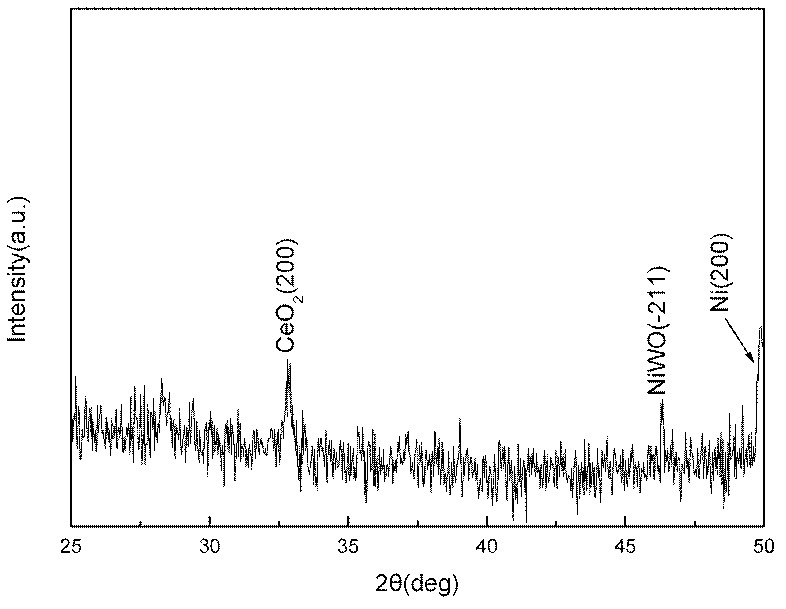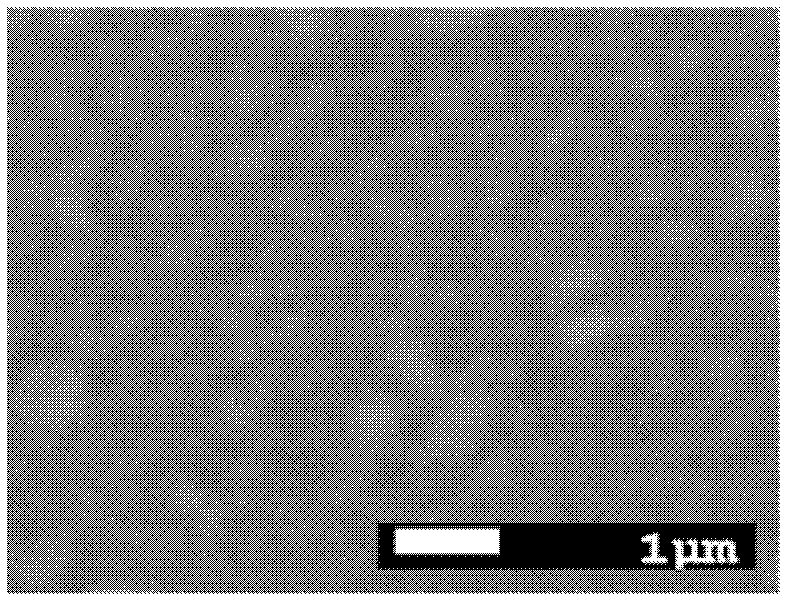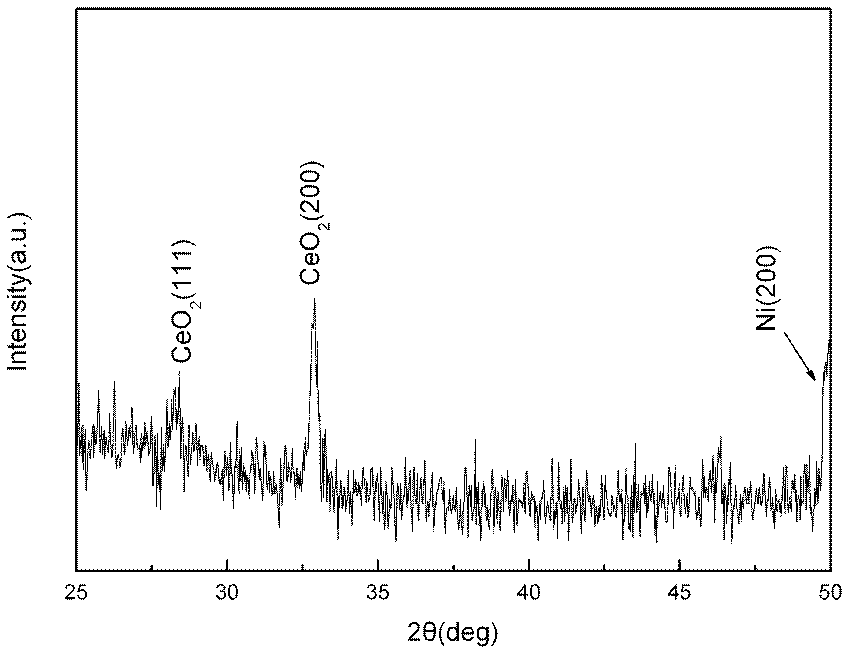Method for preparing high-temperature superconducting coating conductor CeO2 buffer layer film on biaxial texture NiW alloy substrate
A coated conductor and high-temperature superconducting technology, which is applied in the manufacture/processing of superconductor devices, metal material coating technology, coating, etc., can solve the problems of poor chemical stability, difficult acquisition, and low preparation level, etc., to achieve The effect of low price, reduced production cost, and simple production process
- Summary
- Abstract
- Description
- Claims
- Application Information
AI Technical Summary
Problems solved by technology
Method used
Image
Examples
Embodiment 1
[0030] Fabrication of High Temperature Superconducting Coated Conductor CeO on Biaxially Textured NiW Alloy Substrates 2 buffer layer film, its steps are:
[0031] a. Preparation of anhydrous solution: cerium nitrate hexahydrate (Ce(NO 3 ) 3 ·6H 2 O) be dissolved in N-methylpyrrolidone (NMP), and ultrasonically make the solution uniform to form an anhydrous solution;
[0032] b. Colloid preparation: Add polyvinylpyrrolidone (PVP-K30) to the anhydrous solution in step a for ultrasonic dissolution to form a colloid. The amount of polyvinylpyrrolidone added accounts for 5% of the total mass of the colloid.
[0033] c. Colloid coating and drying: coating the colloid prepared in step b on the substrate. The specific method of coating the colloid on the substrate of the coated conductor is as follows: drop the colloid on the substrate and rotate it with a glue leveler so that the colloid is evenly coated on the substrate.
[0034] d. Thermal decomposition treatment: place the ...
Embodiment 2
[0039] The preparation method of this example consists of the following steps in turn:
[0040] a. Preparation of anhydrous solution: cerium nitrate hexahydrate (Ce(NO 3 ) 3 ·6H 2 O) be dissolved in N-methylpyrrolidone (NMP), and ultrasonically make the solution uniform to form an anhydrous solution;
[0041] b. Colloid preparation: Add polyvinylpyrrolidone (PVP-K30) to the anhydrous solution in step a for ultrasonic dissolution to form a colloid. The amount of polyvinylpyrrolidone added accounts for 4% of the total mass of the colloid.
[0042] c. Colloid coating and drying: coating the colloid prepared in step b on the substrate. The specific method of coating the colloid on the substrate of the coated conductor is as follows: drop the colloid on the substrate and rotate it with a glue leveler so that the colloid is evenly coated on the substrate.
[0043] d. Thermal decomposition treatment: place the substrate coated with colloid in a sintering furnace, and pass H into...
Embodiment 3
[0048] The preparation method of this example consists of the following steps in turn:
[0049] a. Preparation of anhydrous solution: cerium nitrate hexahydrate (Ce(NO 3 ) 3 ·6H 2 O) be dissolved in N-methylpyrrolidone (NMP), and ultrasonically make the solution uniform to form an anhydrous solution;
[0050] b. Colloid preparation: Add polyvinylpyrrolidone (PVP-K30) to the anhydrous solution in step a for ultrasonic dissolution to form a colloid. The addition of polyvinylpyrrolidone accounts for 3% of the total mass of the colloid.
[0051] c. Colloid coating and drying: coating the colloid prepared in step b on the substrate.
[0052] d. Thermal decomposition treatment: place the substrate coated with colloid in a sintering furnace, and pass H into the sintering furnace 2 5% H by volume 2 -Ar mixed gas, the furnace temperature was raised to 220°C at a speed of 0.7°C / min, and then raised to 450°C at a speed of 1.7°C / min, kept for 0.5 hours, and then the furnace was allo...
PUM
 Login to View More
Login to View More Abstract
Description
Claims
Application Information
 Login to View More
Login to View More - R&D
- Intellectual Property
- Life Sciences
- Materials
- Tech Scout
- Unparalleled Data Quality
- Higher Quality Content
- 60% Fewer Hallucinations
Browse by: Latest US Patents, China's latest patents, Technical Efficacy Thesaurus, Application Domain, Technology Topic, Popular Technical Reports.
© 2025 PatSnap. All rights reserved.Legal|Privacy policy|Modern Slavery Act Transparency Statement|Sitemap|About US| Contact US: help@patsnap.com



